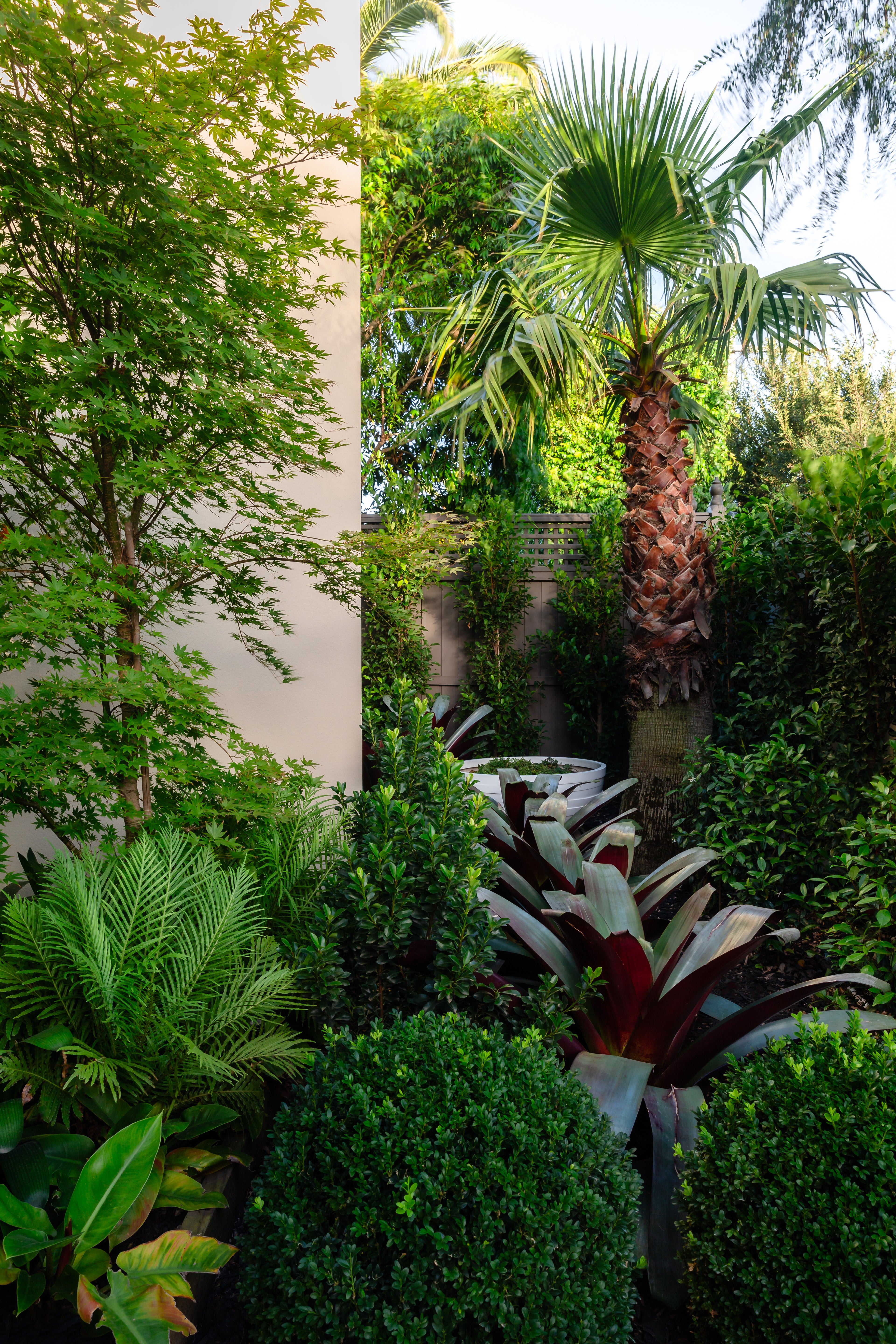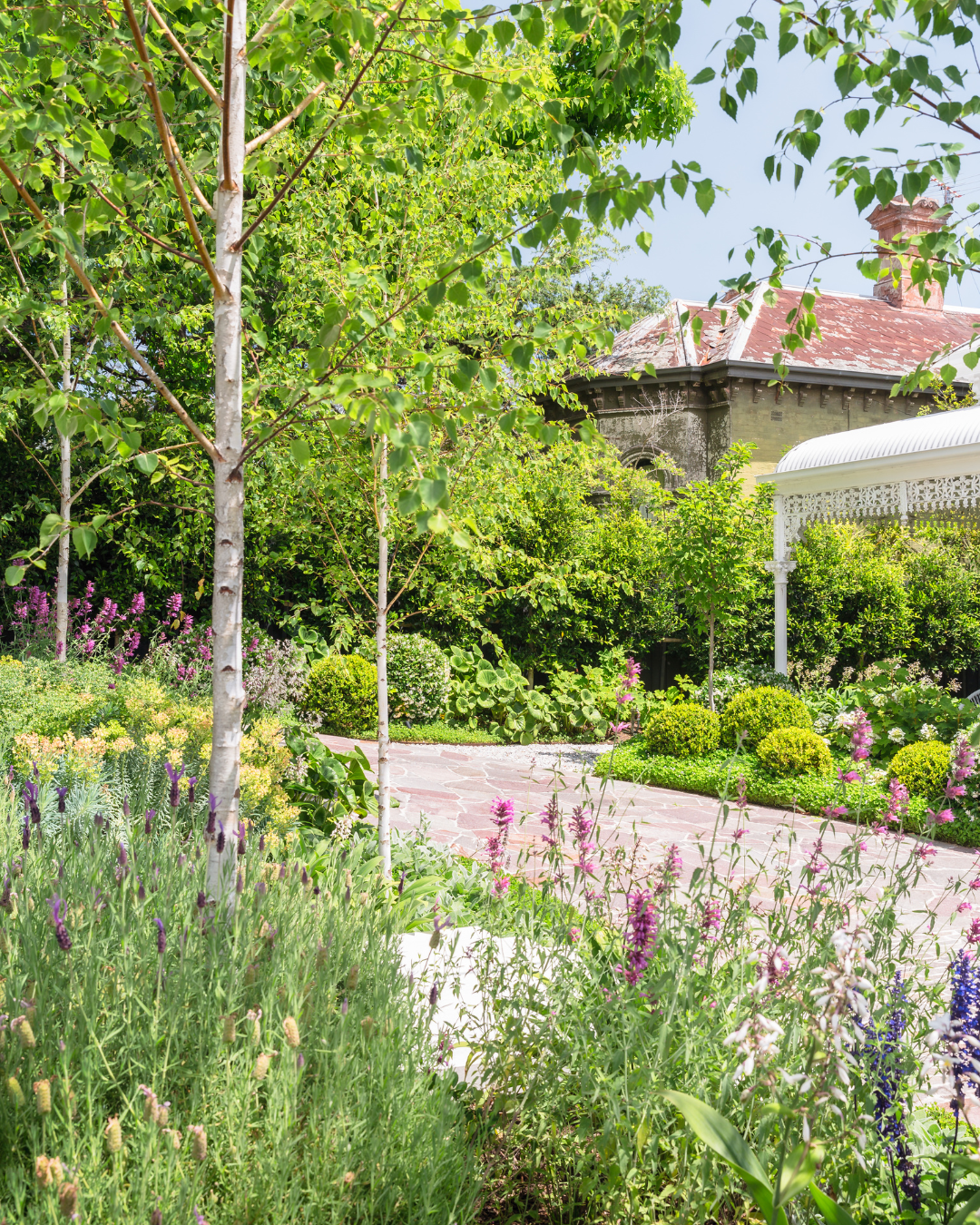In today’s world, where water conservation is essential, creating a stunning, low-water garden doesn’t mean sacrificing beauty. The right tree choices can provide year-round appeal while saving water and minimizing maintenance. Selecting drought-tolerant species is the key to achieving this balance, ensuring your garden remains vibrant with minimal effort. Here, we explore some top trees to plant in a low-water garden, focusing on three exceptional species: Banksia integrifolia, Olea europaea (Olive Tree), and Cupressus leylandii 'Better Green'. These evergreen choices offer distinct characteristics and benefits that make them perfect for luxury landscapes.
Banksia integrifolia – Coastal Banksia
The Banksia integrifolia, or Coastal Banksia, is a versatile tree known for its resilience to challenging conditions. Native to the eastern coast of Australia, it thrives in sandy soils and coastal environments, making it ideal for water-conscious gardeners. Its distinctive bottlebrush-shaped flower spikes bloom year-round, attracting birds and pollinators and adding life to any garden. The Banksia integrifolia is drought-tolerant and salt-resistant, making it suitable for coastal and inland gardens. With a unique form and striking appearance, this tree can be an eye-catching focal point or a natural privacy screen.
Key Facts
- Mature Height: 5-15 metres
- Mature Width: 3-5 metres
- Best Uses: Feature tree, natural privacy screen, coastal gardens
- Leaf Appearance: Long, dark green leaves with a silver underside, adding a shimmering effect in the wind
- Rate of Growth: Moderate to fast
- Tolerates: Drought, salt, wind
Why It's Perfect for Your Garden
The Banksia integrifolia stands out for its ability to thrive in low-water conditions while still providing year-round visual interest. Its tolerance to coastal winds and salty air makes it an excellent choice for seaside properties. Whether you create a lush oasis or add structure to your landscape, this tree adapts well to various garden styles. The silver undersides of its leaves catch the sunlight, creating a shimmering effect that brings a touch of elegance to any setting. Its ability to attract native birds and insects makes it a fantastic choice for creating a lively, buzzing garden.
Olea europaea – Olive Tree
The Olea europaea, commonly known as the Olive Tree, has been cherished for centuries for its silvery-green foliage and gnarled trunk, which lends a sense of timeless beauty to any landscape. This drought-resistant species originates from the Mediterranean region and is well-suited for low-water gardens. The Olive Tree's slow growth and manageable size make it a practical choice for various garden settings, from small courtyards to expansive estates. With proper care, it can even produce olives, adding both aesthetic and culinary value to your property.
Key Facts
- Mature Height: 3-10 metres
- Mature Width: 3-5 metres
- Best Uses: Feature tree, ornamental tree, container planting
- Leaf Appearance: Narrow, silvery-green leaves that contrast beautifully with darker plants
- Rate of Growth: Slow to moderate
- Tolerates: Drought, poor soil, high temperatures
Why It’s Perfect for Your Garden
The Olea europaea is a fantastic addition to any water-wise garden due to its resilience and low maintenance requirements. Its refined appearance, characterized by a gnarled trunk and narrow, shimmering leaves, makes it an ideal choice for those seeking to add a touch of rustic elegance. The Olive Tree thrives in full sun and dry conditions, perfect for Mediterranean-style gardens. Whether used as a striking standalone specimen or grouped to create a natural screen, the Olive Tree brings a sense of tranquility and understated luxury to outdoor spaces. Plus, the potential to harvest your olives adds a delightful element of sustainability.
Cupressus leylandii 'Better Green' – Leyland Cypress
The Cupressus leylandii 'Better Green', also known as the Leyland Cypress, is an evergreen tree prized for its dense foliage and rapid growth. This hybrid species is especially suitable for low-water gardens, thanks to its drought tolerance and low maintenance needs. With a more compact growth habit than traditional Leyland Cypress varieties, the 'Better Green' cultivar offers a refined look that complements upscale gardens. Its lush, dark green foliage remains vibrant throughout the year, making it an ideal choice for privacy screens, windbreaks, or as a backdrop for other garden features.
Key Facts
- Mature Height: 5-12 metres
- Mature Width: 3-4 metres
- Best Uses: Privacy hedge, windbreak, formal garden structure
- Leaf Appearance: Dense, dark green foliage that remains full and lush year-round
- Rate of Growth: Fast
- Tolerates: Drought, poor soil, coastal conditions
Why It’s Perfect for Your Garden
The Cupressus leylandii 'Better Green' excels in gardens where privacy and structure are desired. Its fast growth and dense foliage make it an excellent choice for establishing a natural barrier against wind, noise, or neighbours. Despite its robust growth rate, this tree requires minimal water once established, making it a practical option for sustainable gardening. The 'Better Green' cultivar offers a refined alternative to traditional hedging plants, providing a uniform appearance that suits formal garden settings. Its resilience in various conditions, including coastal areas, ensures that your garden remains vibrant with minimal upkeep.
Essential Tips for Planting and Caring for Low-Water Trees
Choosing the Right Location
When selecting a spot for drought-tolerant trees, ensure they receive adequate sunlight, as many low-water species thrive in full sun. Avoid areas where water tends to accumulate, as excessive moisture can harm these trees. For coastal trees like Banksia integrifolia, consider locations that may benefit from wind protection.
Soil Preparation
Well-draining soil is crucial for the health of drought-resistant trees. Before planting, improve the soil's drainage by adding sand or gravel, and incorporate organic matter to enhance fertility. This preparation helps young trees establish strong root systems, ensuring long-term resilience.
Watering Guidelines
Even drought-tolerant trees require regular watering during their first year to establish roots. Once established, gradually reduce the frequency of watering. Deep watering every few weeks encourages deep root growth, making the trees more resilient to dry conditions.
Mulching
Mulch around the tree's base helps retain moisture in the soil and reduces the need for frequent watering. Use a 5-10 cm layer of organic mulch, such as wood chips or bark, to keep the roots cool and minimize water evaporation.
Conclusion
Incorporating low-water trees like Banksia integrifolia, Olea europaea, and Cupressus leylandii 'Better Green' into your garden conserves water and adds lasting beauty and structure. These species offer a range of benefits, from providing privacy to attracting wildlife, all while demanding minimal maintenance. Choosing the right tree and following proper planting and care guidelines can create a garden that thrives even in challenging conditions.
FAQs
-
What is the best time to plant drought-tolerant trees?
The best time to plant is during the cooler months, typically autumn or early winter. This allows trees to establish roots before the heat of summer. -
Can I plant these trees in pots?
Trees like Olea europaea can thrive in containers if provided with proper drainage and sufficient sunlight. -
How often should I water low-water trees during the first year?
Water newly planted trees weekly during their first year, gradually reducing the frequency as they are established.













